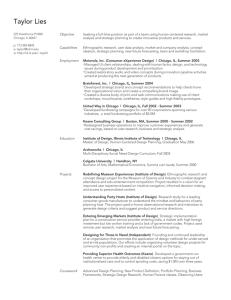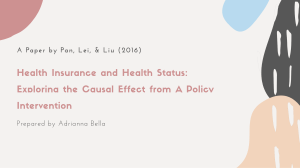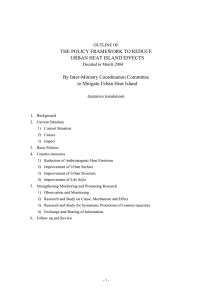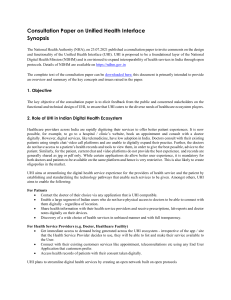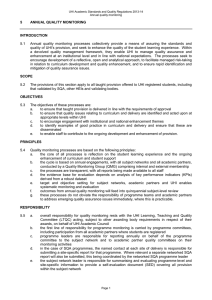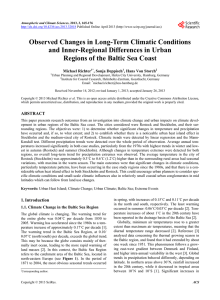ABSTRACT THESIS STUDENT: DEGREE:
advertisement
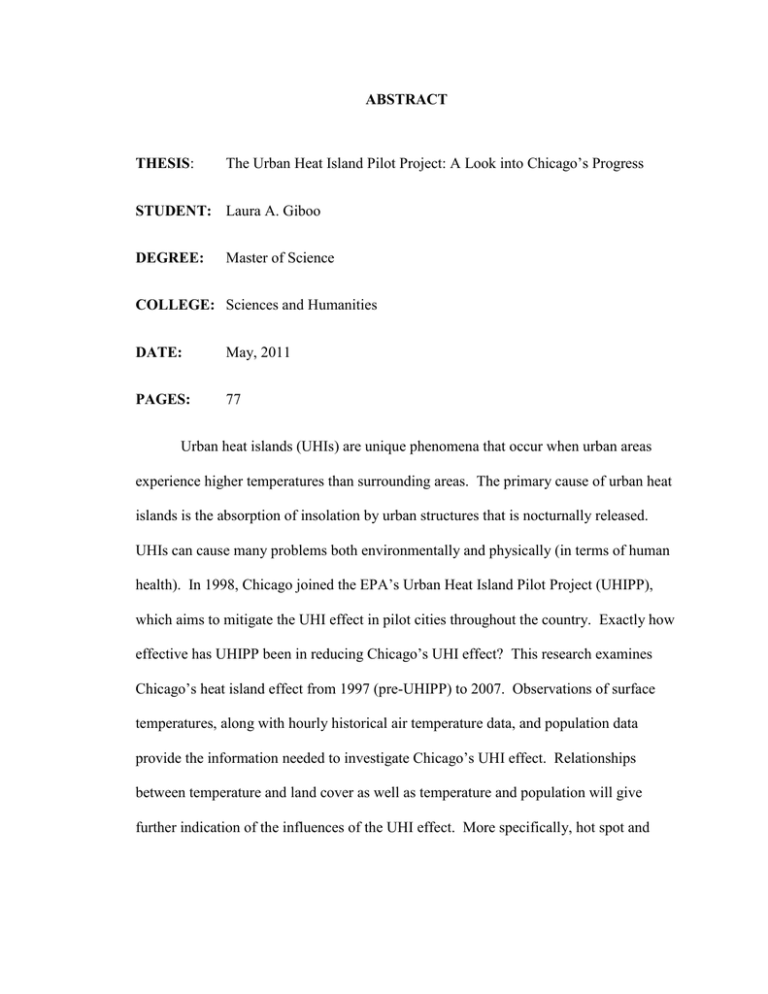
ABSTRACT THESIS: The Urban Heat Island Pilot Project: A Look into Chicago’s Progress STUDENT: Laura A. Giboo DEGREE: Master of Science COLLEGE: Sciences and Humanities DATE: May, 2011 PAGES: 77 Urban heat islands (UHIs) are unique phenomena that occur when urban areas experience higher temperatures than surrounding areas. The primary cause of urban heat islands is the absorption of insolation by urban structures that is nocturnally released. UHIs can cause many problems both environmentally and physically (in terms of human health). In 1998, Chicago joined the EPA’s Urban Heat Island Pilot Project (UHIPP), which aims to mitigate the UHI effect in pilot cities throughout the country. Exactly how effective has UHIPP been in reducing Chicago’s UHI effect? This research examines Chicago’s heat island effect from 1997 (pre-UHIPP) to 2007. Observations of surface temperatures, along with hourly historical air temperature data, and population data provide the information needed to investigate Chicago’s UHI effect. Relationships between temperature and land cover as well as temperature and population will give further indication of the influences of the UHI effect. More specifically, hot spot and cool spot analysis, will give Chicago and other cities an idea of the effectiveness of EPA’s UHIPP in reducing urban heat islands.





